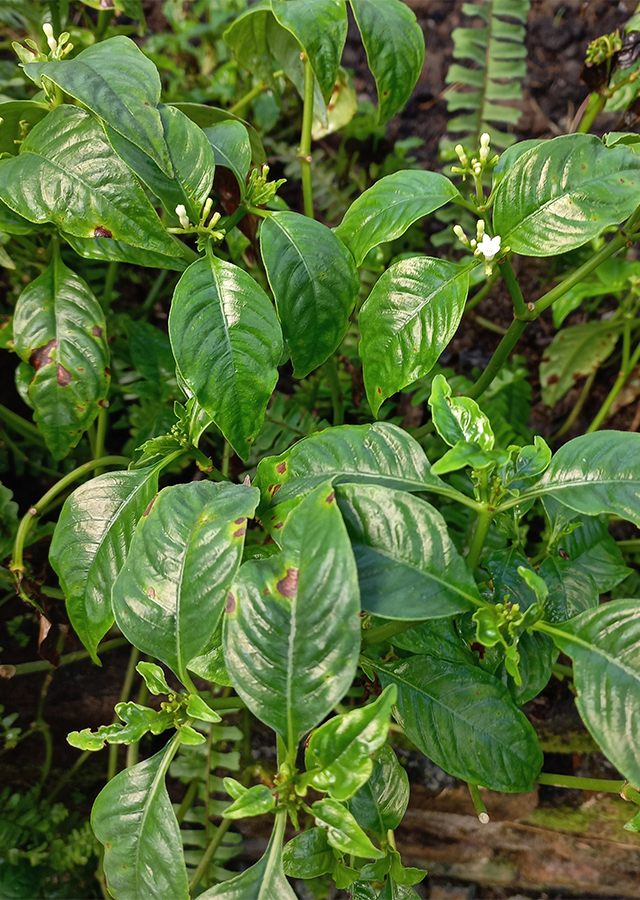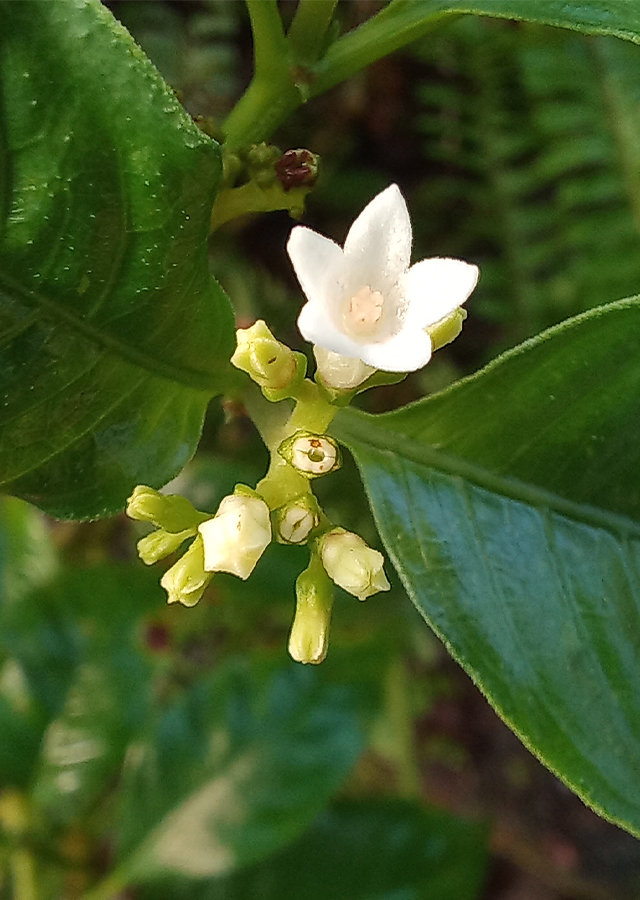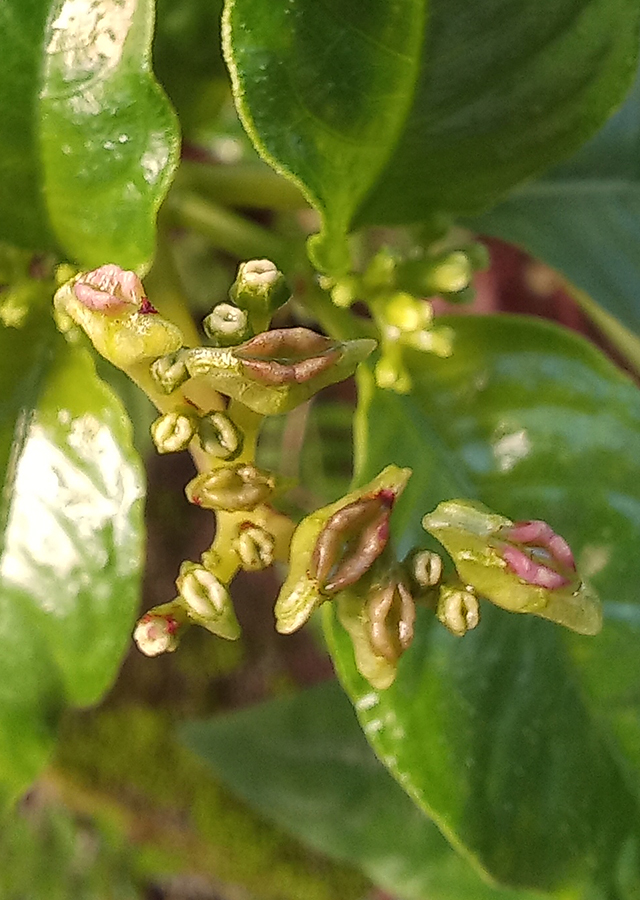Traditional Herbs from Ophiorrhiza mungos
wound
- Take enough sarhati leaves and wash them until clean.
- Crush them until they become a paste, add enough coconut oil.
- Put the grinding on the wound area.
boils
- Pick the leaves\ u00a0sharp enough fresh liver then wash until clean.
- Boil the leaves until boiling.
- Let them warm/cold.
- Strain then drink.
What is Ophiorrhiza mungos Looks like??



Parts of Ophiorrhiza mungos that could be used
- Leaves
- Bark
- Roots
Ophiorrhiza mungos Distribution
Sarhati spreads from East Asia-Southwest China, India, Sri Lanka, Bangladesh, Myanmar, Thailand, Vietnam, Malaysia, to Indonesia. Sarhati or O. mungos is specifically known as 'snakeroot' because it is known to be used as a treatment for snake bites. This plant has anticancer, antiviral, laxative and sedative activities.Agroecology of Ophiorrhiza mungos
Sarhati grows in primary and secondary forests, shady and damp to wet areas at an altitude of up to 400 m above sea level. (Little information obtained).
Morphology of Ophiorrhiza mungos
- Roots at lower node.
- Leaves 7-15 x 3-6 cm, elliptical or elliptical-lanceolate, base thinned, apex pointed, papery, hairy on veins below, petiole up to 1.5 cm, needle-shaped sitting leaves, 3 - 5 mm long, 2-fid at the tip.
- Compound flowers, appear at branch terminals, scorpioid cymes (secondary shoots develop alternately on the stem), dense stalk up to 2.5 cm, stiffly hairy. Calyx tube 1 mm long; lobes 0.8 - 1 cm long, white with pink markings on the lobes.
- Fruit capsule 2.5 cm long. \u00a0- 3 cm, 4 - 6 mm wide, obcordate (breech heart), lateral compression, glabrous, loculicidal dehiscence.
- Many seeds, angular.
Cultivation of Ophiorrhiza mungos
Generative propagation using seeds. Seeds are best spread at the beginning of the rainy season.
Ophiorrhiza mungos, more details :
Chemical Content of Ophiorrhiza mungosAlkaloids (camptothcin, hydroxyl camptotheicin, 10-methoxy camptothecin), 9-methoxy camptothecin, luteolin-7-O-Glucoside, 5α-ergosterol-8(14) - ene-3β-ol, 5α-ergosterol-7-ene - 3β-ol, phenoloc compounds, tannins, hydrocyanic acid, and flavonoids.
Benefits of Ophiorrhiza mungos
Laxative and sedative, treats cancer (including colon, lung, ovarian and cervical cancer), fights neck and head cancer, treats snake bites, keeps skin moist and soft, serves as a bitter tonic and stomach aphrodisiac, fights pathogenic protozoa such as Leishmania donovani and Trypanosoma brucei (which cause Leishmaniasis and sleeping sickness respectively), treat wounds, ulcers. Has antiviral activity against herpes simplex virus and antitumor.
Simplisia of Ophiorrhiza mungos
Another Facts for Ophiorrhiza mungos :
Synonym of Ophiorrhiza mungosOphiorrhiza ostindica Christm.
Habitus of Ophiorrhiza mungos
Herb. Annual herb 10 - 50 cm high
Habitat of Ophiorrhiza mungos
- Forest
No comments:
Post a Comment